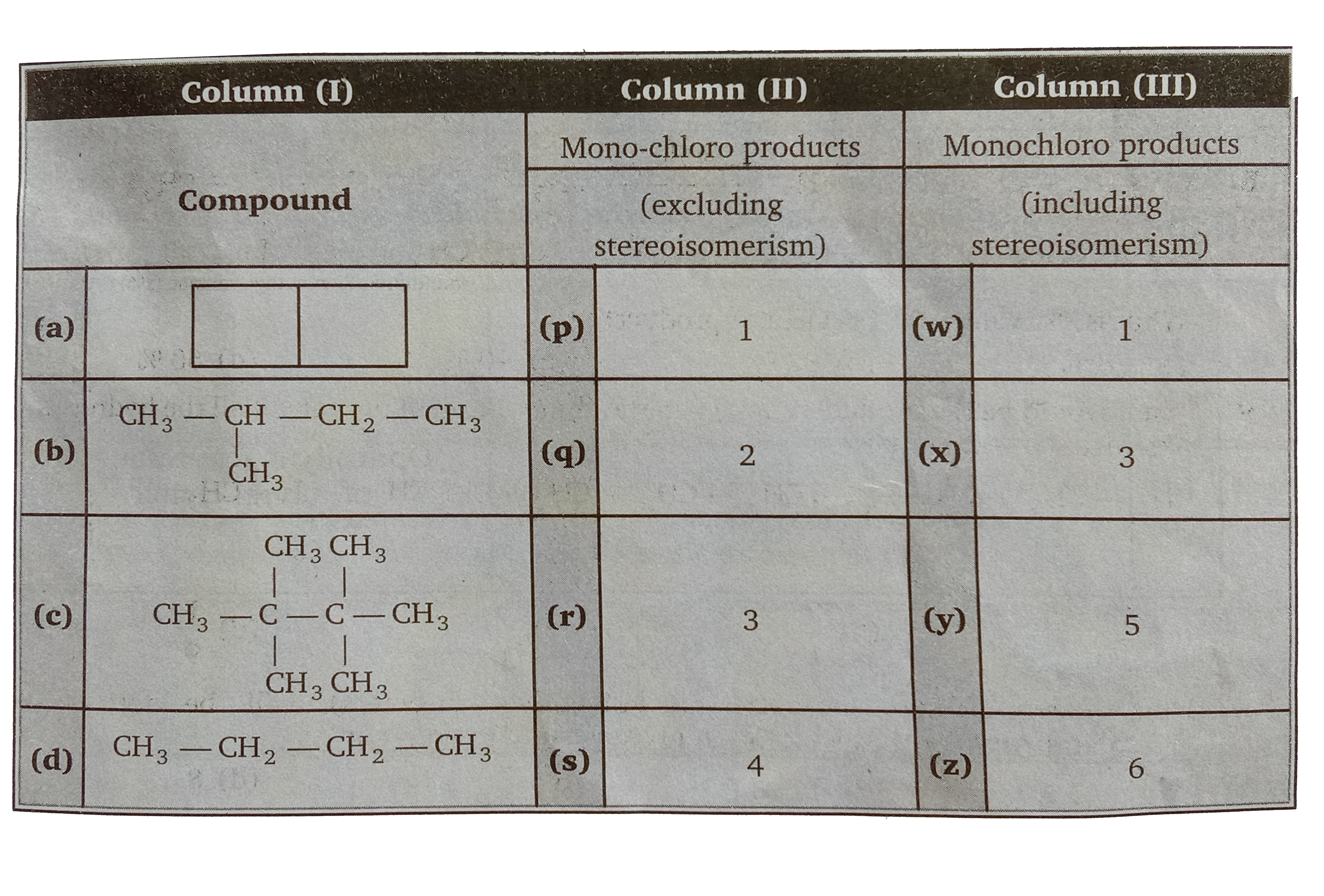Find the correct match
Column A Column B Column
I. Mackerel Rastrelliger Freshwater fish
II. Honey bee Apis Wax
III. Miragala Tacchardia Marine waterfish
IV. Silkworm Bombyx Mulberry silkSolution in Telugu
II and IV
I and II
IV only
I and II
The correct Answer is:A
Step by step video, text & image solution for Find the correct match Column A Column B Column I. Mackerel Rastrelliger Freshwater fish II. Honey bee Apis Wax III. Miragala Tacchardia Marine waterfish IV. Silkworm Bombyx Mulberry silk by Biology experts to help you in doubts & scoring excellent marks in Class 11 exams.
Topper's Solved these Questions
- BOOK - AAKASH SERIESCHAPTER - STRATEGIES FOR ENHENCEMENT IN FOOD PRODUCTIONEXERCISE - EXERCISE-II94videos
STRATEGIES FOR ENHENCEMENT IN FOOD PRODUCTION
- BOOK - AAKASH SERIESCHAPTER - SEXUAL REPRODUCTION IN FLOWERING PLANTS EXERCISE - EXERCISE - III (Previous AIPMT/NEET Questions )61videos
SEXUAL REPRODUCTION IN FLOWERING PLANTS
- BOOK - AAKASH SERIESCHAPTER - STRUCTURAL ORGANISATION IN ANIMALSEXERCISE - EXERCISE-III (PREVIOUS AIPMT/NEET QUESTIONS)24videos
STRUCTURAL ORGANISATION IN ANIMALS
Similar Questions
The 'Hillikar' is a
05:41View SolutionThe coconut water from tender coconut represents
02:56View SolutionSmooth muscles are
03:34View SolutionMatch the column I with column II.
Column IColumn IIExternal fertilisation(i) EarthwormInternal fertilisation (ii)CockroachBisexual(iii) Frogs and FishesUnisexual(iv) Birds and mammals04:57View SolutionMatch column I with column II and select the correct answer from the given codes.
Column IColumn IIA.Wax(i)Interspecific hybridisationB.Pollinator(ii)MicropopagationC.Mule(iii)BeeD.Tissue culture(iv)Apiculture05:21View SolutionMatch the names given under Column-I with their relations given under column-II , choose the answer which gives the correct combination of the alphabets of the two columns {:("Column-I","Column-II"),(A." Bombyx mori",P." Disease ofmulberry"),(B." Morus alba",q." Centre where silkworm egg are produced and supplied"),(C." Grainage",r." Silk moth"),(D." Powdery mildew",s." Mulberry plant"),(,t." Freshly hatched silkworm"):}
02:19View SolutionMatch the column I with column II and with column III.
 01:48View Solution
01:48View SolutionMatch the column I with column II and with column III.
 03:07View Solution
03:07View SolutionFind the correct match:
Column AColumn BColumn C1.MackeralRastrelligerFreshwater fishii.HoneybeeApisWaxiii.MirgalTacchardiaMarine water fishiv.SilkwromBombyxMulubry silk03:11View SolutionMatch the items given in Column -I with those in Column -II and select the correct option from the codes given below .
Column−IColumn−II(a) Jelly fish (i)Arthropoda(b)Cray fish(ii)Echinodermata(c)Devil fish(iii)Mollusca(d)Star fish(iv)Coelenterarata02:21View SolutionMatch the column I with column II.
Column IColumn IIExternal fertilisation(i) EarthwormInternal fertilisation (ii)CockroachBisexual(iii) Frogs and FishesUnisexual(iv) Birds and mammals06:57View SolutionMatch column I with column II and select the correct answer from the given codes.
Column IColumn IIA.Wax(i)Interspecific hybridisationB.Pollinator(ii)MicropopagationC.Mule(iii)BeeD.Tissue culture(iv)Apiculture03:02View SolutionMatch Column I with Column II. (a) Physalia (Column I),(i) Devil fish (Column II),(b) Ascaris (Column I),(ii) King crab (Column II),(c) Limulus (Column I),(iii) Roundworm (Column II),(d) Octopus (Column I),(iv) Portuguese man of war (Column II)
03:18View SolutionMatch the columns and choose the correct answer. (a) Aldosterone (Column I) (i) Zona fasciculata (Column II) (b) DHEA (Column I) (ii) Zona glomerulosa (Column II) (c) Cortisol (Column I) (iii) Zona reticulans (Column II) (d) Adrenaline (Column I) (iv) Adrenal medulla (Column II)
View SolutionMatch Column I with Column II. (a) Physalia (Column I),(i) Devil fish (Column II),(b) Ascaris (Column I),(ii) King crab (Column II),(c) Limulus (Column I),(iii) Roundworm (Column II),(d) Octopus (Column I),(iv) Portuguese man of war (Column II)
05:37View SolutionMatch the columns and choose the correct answer. (a) Aldosterone (Column I) (i) Zona fasciculata (Column II) (b) DHEA (Column I) (ii) Zona glomerulosa (Column II) (c) Cortisol (Column I) (iii) Zona reticulans (Column II) (d) Adrenaline (Column I) (iv) Adrenal medulla (Column II)
03:05View Solution
